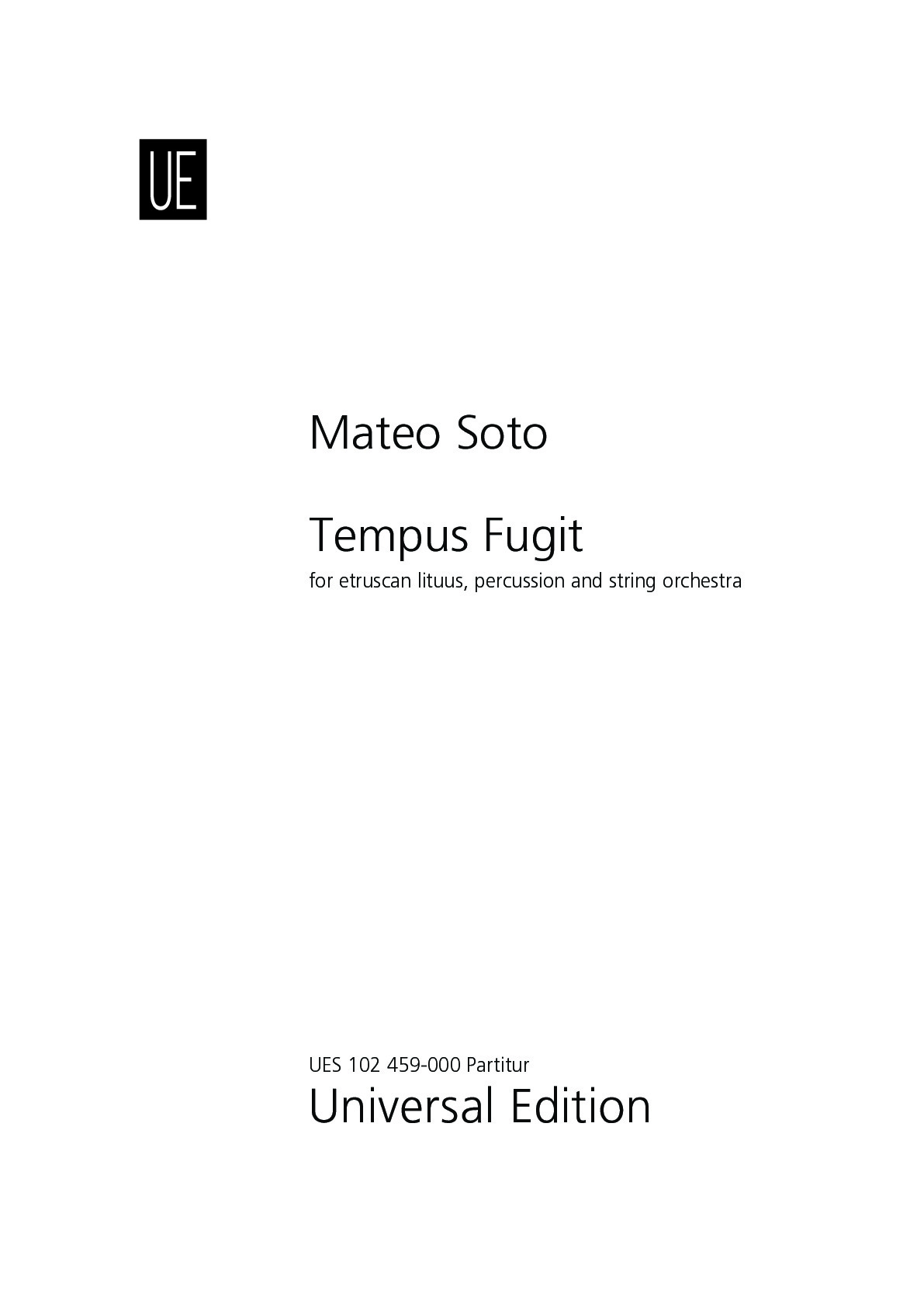.png)
Digital edition
immediately available as PDF
€35.95
Payments:
Shipping:
Mateo Soto
Tempus Fugit, for etruscan lituus, percussion and string orchestra
UES102459-000
Type: Dirigierpartitur
Format: 210 x 297 mm
Pages: 40
Digital edition
immediately available as PDF
€35.95
Payments:
Shipping:
Description
Tempus Fugit was commissioned by the Camerata Antonio Soler for the "Occurrens Sonus" project. Intending to promote the creation of new music for ancient Greco-Latin instruments like Carnix, Cornu and Etruscan Lituus.
The Etruscan Lituus dates back to around 680 BCE, with only six instruments having been discovered to this day. The specific Lituus that Tempus Fugit calls for is a modern analogue of the Pian di Civita Lituus, excavated from the ancient city of Tarquinia and meticulously reconstructed in bronze by Dr. Peter Holmes.
The Pian di Civita Lituus was not discovered in its present-day form, however, but had been ritually bent into three sections so that it could no longer be used as a sound tool. The instrument was then buried in a shallow pit under the threshold of a ritual building along with an axe, a folded shield and the body of a young child, ensuring that anyone who entered would have to pass over this liminal space. The power of this particular Lituus therefore outlasted its worldly use.
Played with the bell on the ground, the Lituus forms a conduit between heaven and earth and the spiral cord around the tubing could be said to represent a snake, in itself a symbol of immortality and rebirth. In Roman society, the J-shaped Lituus existed in two forms, that of sound tool and then also as the ritual staff of an augur, raised up to the sky to make a square and to see into the future.
More information
Type: Dirigierpartitur
Format: 210 x 297 mm
Pages: 40

